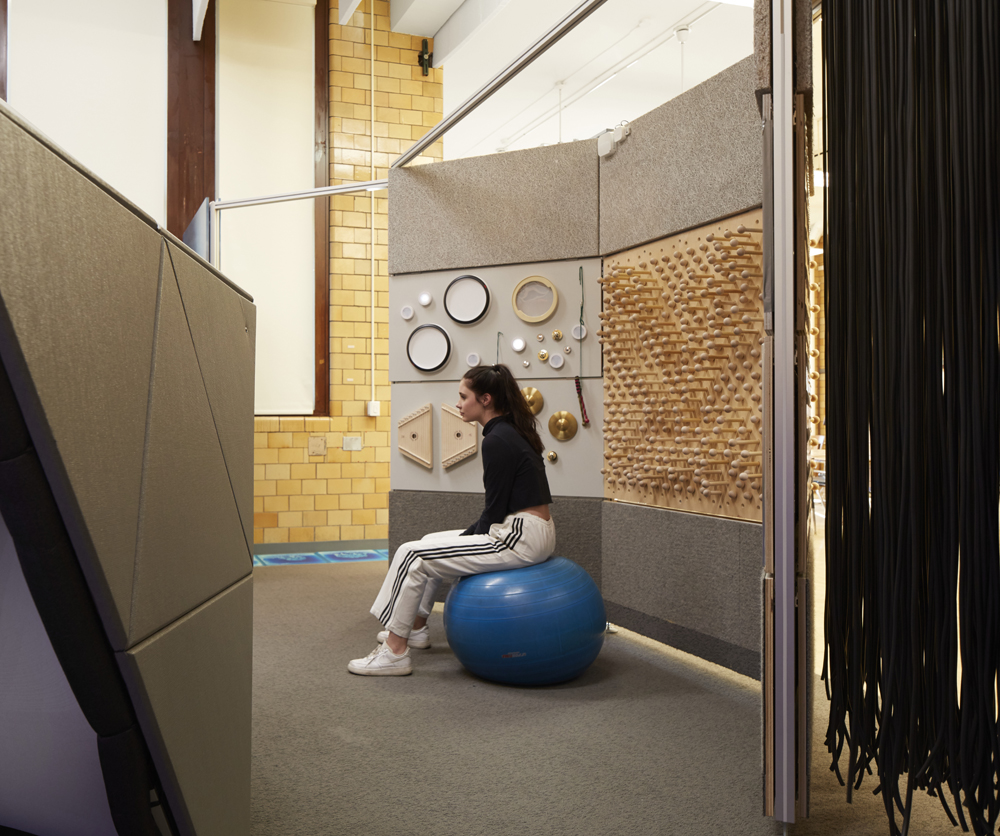Key Design Outcomes
People: Experience - Using a validated observation method, students were observed to be significantly happier during the hub visit (M=3.42) than before (M=2.96). This effect carried over after returning to class. Additional observed focus was found to be significantly improved during the hub visit (M=4.12) versus before (M=3.52). Since a majority of the students with cognitive disorders were non-verbal or minimally verbal, systematic behavioral observations were the most reliable metric.
People: Health & Wellness - Students with autism spectrum disorder (ASD) reported higher emotional wellbeing in the second semester than the first semester (statistically significant at p= 0.079) based on a wellbeing survey conducted in the two semesters following installation.
People: Financial Impact - The preliminary design concept including a drywalled room with proprietary products was priced at more than $250,000. Through reprioritization, a more accessible, affordable and modular solution significantly reduced costs to $60,000, including sensors for research which would be unnecessary in replicated projects. The reduced cost balanced with improved student outcomes make a compelling business case.
Space: Indoor Environmental Quality - Median sound-intensity levels inside the cocoon were lower than other areas by 3 dB(A). The cocoon reduced light from the classroom and windows significantly. The temperature was stable (low 70s°F) across sensor locations. Median relative-humidity values were within a recommended range of 30 to 60 percent (Washington State Department of Health, 2003).
Space: Spatial Quality II - The hub’s modular design system and the mobility of the sensory cocoon allow teachers and staff members to adapt and evolve the space as needed in the future. The non-proprietary sensory interventions are also easily replaced if they’re underutilized or need replacement due to extensive use. The modular system of the hub and the cocoon also enable other schools or organizations to adapt the design for replication at their own sites.



